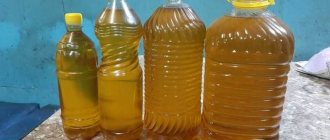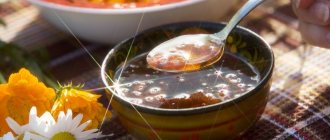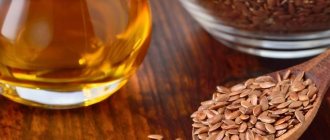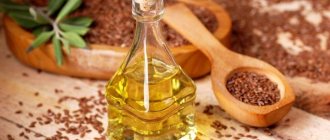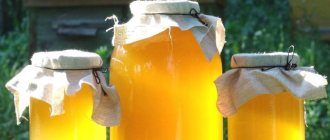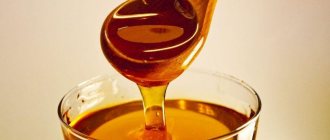Hello, friends! Unfortunately, a number of counterfeits have become commonplace on the domestic market. Nowadays, no one is surprised by the presence on the shelves of butter that is not butter. Beautiful names hide margarines and spreads. This raises a logical question - how to distinguish butter from a fake.
Each manufacturer claims that the composition of their product is the best. Only natural ingredients that are useful and necessary for the human body are used.
What is really there is a big mystery. The only fact is that the parodies have nothing in common with the natural creamy product.
Should butter crumble?
In its natural form, this product is exclusively of animal origin, since it is made only from cow's milk and cream. Depending on the cooking technology, there is butter “Traditional”, “Amateur”, “Peasant”. Accordingly, the fat content of such a product varies from 82.5% to 72.5%. If the technology for preparing butter is consistent, then the amount of milk fat in it will strictly comply with the requirements of GOST.
To check the quality of the purchased product, you need to place it in the freezer for a while. Even when frozen, fairly hard butter should cut well, of course, if the amount of fat in it corresponds to the value indicated on the package. Ideally, when cut, a piece retains its entire structure and does not crumble. Why butter falls apart into small particles after defrosting is a question for unscrupulous manufacturers. And there are not so few of them on our market.
Home laboratory
Now to practical ways to distinguish fake butter from natural butter.
The previous methods help a lot when purchasing. You need to focus on the appearance, packaging, information from the manufacturer.
But there are also ways to check at home how high quality the products are.
- Warm water test
. Fill a glass or bowl with warm water. Place a spoonful of the product you are testing there. If it is a mixture of milk and cream, then the components will completely dissolve in warm water. In the presence of vegetable fats, an insoluble clot is formed. Plus, sediment forms at the bottom; - A frying pan to the rescue
. Need one more piece of butter. Place on a heated frying pan. If everything is good with the composition, then the melting process will be uniform. A white film will appear, as well as a characteristic pleasant creamy aroma. Heating the spread leads to the appearance of a clear liquid. The smell is not very pleasant. But due to flavorings, it can resemble real butter made from cream; - The use of potassium permanganate
. A simple but clear quality test. You need to make a solution from potassium permanganate. Then add some oil there. If the liquid becomes lighter in color, this is a good sign. When vegetable fat enters, no changes occur; - Time test
. An elementary check, but time-consuming. Remove products from the freezer or refrigerator. Leave at room temperature. A counterfeit product will have drops of moisture on the surface; - Freeze check
. Also a good way. You need to place the briquette in the freezer for 3-4 hours. When butter freezes, it will not cut. It will start to break off in pieces. If it is a mixture based on palm or vegetable fat, then even frozen bread is easy to spread; - Vodka to the rescue
. You can also take a container, pour vodka into it, and then add oil. Detects dyes. If the vodka begins to turn yellow, then it contains dyes. With unchanged color, you have a natural, high-quality product in your hands.
After conducting 1-2 such tests, you can safely say that you bought a fake or a high-quality product.
Why is butter soft?
Excessive softness of natural oil is caused by a violation of manufacturing technology. If the oil remains soft when cold or frozen, then the product contains vegetable fats that prevent hardening and is counterfeit.
Natural butter is a dairy product that contains 78-81% fat, 17.9% water, 0.1% carbohydrates, 0.9% protein. Due to milk fats, butter is soft and plastic; in its normal state (at room temperature) it is easily spread on baked goods.
2
Why does homemade butter crumble with a knife?
When choosing a store-bought product, we 100% trust the information on the packaging. Therefore, why butter crumbles can only be explained by a violation of production or storage technology on the part of the manufacturer. With a product prepared at home, the situation is somewhat different. To understand why homemade butter crumbles when cut, you need to understand the technology of its preparation.
As in production, such a product is prepared by whipping heavy milk cream. After a few minutes of running the mixer or food processor, they separate into butter and buttermilk (whey). It is this liquid that needs to be separated from the fat in the future, since when frozen the whey will produce that same crumb. Properly prepared homemade butter never crumbles and always spreads easily on bread.
Why is butter dangerous?
Since childhood, our brains have been so loaded with the benefits of butter that we cannot even admit that it could be completely the opposite. So, know that butter is dangerous!
The problem is that butter contains a huge amount of saturated fat. What do these fats do? Hack yourself on your nose - nothing good! Saturated fats increase the level of “bad” cholesterol in the body and provoke many problems with the cardiovascular system. Doctors say that if you eat oil constantly, the appearance of atherosclerosis is guaranteed.
People with heart disease and high blood pressure should limit their oil intake or even avoid it completely.
Let's move on. As mentioned above, most often we don’t really look at what we buy – butter or spread, that is, a mixture of vegetable and animal fats. On the contrary, it seems to us that the spread has less calories, which means we won’t get fat.
But anything less than 80% is no longer oil , so don’t indulge yourself in illusions. Thus, if you do not want to be registered in your hospital, then do not buy an oil that is not one.
But the danger of the spread lies elsewhere. The spread contains so-called trans isomers, which can cause damage to arterial walls and cause problems with the gastrointestinal tract.
We also very often buy butter in parchment. Such oil actually quickly oxidizes in light and loses beneficial vitamins. Therefore, always buy butter exclusively in foil! By the way, butter should be stored so that light does not fall on it and the temperature is no more than 12 degrees.
Why do you need butter?
Before distinguishing real butter from a fake, it will be correct to answer the question of the benefits and significance of a natural product for humans.
If we talk about real butter, then the product contains useful vitamins, minerals, and microelements.
Health and nutrition experts note that 20 grams of this product every day has a positive effect on:
- skin condition;
- hair;
- nervous system;
- endocrine system;
- vision;
- concentration;
- digestive system, etc.
This is a real and proven benefit.
But counterfeit butter cannot give anything like that. Moreover, counterfeit products are harmful and pose a health hazard. This is a source of harmful cholesterol, carcinogens, dangerous vegetable fats, etc.
If you use butter in your diet, it should be only a natural product. Yes, it is expensive, the price is high. But it is easily explained by production technology.
General rules
Oil has many beneficial properties, but loses them when exposed to high temperatures and direct sunlight. Therefore, the product should be stored in a cool, dark place. In urban environments, the ideal place is a refrigerator, but in the countryside, a cool cellar does the job well.
But knowing the optimal conditions is not enough, because there are many nuances - packaging, composition, temperature conditions. All this must be taken into account when organizing product storage.
Two packs of oil
Tests
When you come home from the store, you need to pay attention to whether the product sticks to the packaging. If yes, then it is a spread or margarine. With prolonged contact with air, the surface of good butter acquires a yellow tint. Counterfeits made from vegetable fats do not change color. However, this does not apply to uneven plaque caused by the presence of dyes.
You can determine quality at home using the following tests:
- Test for causticity. If after freezing the product can be cut without effort and get an even cut, then it is a fake. Good oil crumbles and breaks.
- In hot water. If you put natural oil in a liquid heated to 70 °C, it will completely dissolve and color it milky. A film forms on the surface - this is milk fat. After immersing the fake, the water becomes cloudy. The film in this case resembles a layer of vegetable fat. The spread placed in a heated liquid does not dissolve at all when stirred.
- Heating in a frying pan. When exposed to high temperatures, fakes smoke and begin to burn. At the same time, they give off an unpleasant odor.
- Ability to change consistency. A high-quality product melts completely already at room temperature. This is not typical for fakes. At best, they do not melt completely, and at worst, they remain practically unchanged.
- Testing for dyes. You need to heat the vodka to 60 °C, place a portion in it, and stir. If everything is done correctly, the real butter will separate into fractions, and a smooth film of milk fat will appear on the surface of the liquid. A fake will have unevenness and deformations. A change in the color of alcohol to bright yellow is a sign of the presence of dyes.
- Study of chemical reactions. You need to cut off a portion and put it in a glass with potassium permanganate. If the product is natural, the liquid will begin to lighten. A counterfeit product will not have this effect.
6 reliable ways to check the quality of honey at home
To increase the volume and improve the taste of a low-quality product, sellers resort to adulteration of honey...
Attention! You can diversify the taste of classic butter with the help of spices, sauces, etc. To do this, you need to soften the product and mix it with the selected additive. Then knead it, give it the desired shape and put it in the refrigerator.
You can easily disguise a mixture of vegetable fats, dyes, flavors and various additives as butter. Only specialists in the laboratory can fully determine the composition of a product, but you can suspect counterfeit yourself. To do this, you need to carefully study the composition, consistency, smell and appearance. Knowing how best to choose oil, you can protect yourself and your family.
Only "butter"
The product should be called “oil” (Photo: pixabay.com) Carefully examine the packaging. It should say “butter” and not “maslitse”, “maslichko” and other diminutive terms. If the manufacturer indicates “oil” on the packaging, he is obliged to adhere to the standard in recipe and preparation.
It would be a good idea to read the composition. The fewer ingredients it has, the better. If you find vegetable fat in the composition, put the package back. This product has nothing to do with natural oil.
How to choose quality oil in the store?
When buying butter in a supermarket, you should pay attention to a number of important criteria:
- GOST for natural butter - R 52969-2008 or R 52253-2004 (Vologda product produced by only three factories). Since July 2015, another standard, GOST 32261-2013, has been put into effect. It is recommended to learn or remember all these values in order to always buy only high-quality butter.
- The fat content of a natural traditional, amateur or peasant product is 72.5-82.5%. If it is lower, it means it is a spread or margarine.
- The packaging should not be paper, but foil. Only it can protect the product from exposure to ultraviolet radiation and other negative factors.
- The composition of the butter is 100% pasteurized cream. The presence of milk fat substitutes, emulsifiers and other additives is not allowed.
- The shelf life of a natural product does not exceed 1 month, unless preservatives and stabilizers are added to it.
What to pay attention to
Spreads, margarine and fakes made from vegetable fats are often called butter. To purchase a quality product, you need to pay attention to the composition. Real butter contains fats from dairy cream and whole milk. The presence of salt is allowed, but there should be no other additives. Some manufacturers try to hide the presence of harmful components using small print.
Attention!
The name of the product must specifically mention: sweet cream/sour cream butter.
Before purchasing, it is wise to decide what type of dairy product is needed. Chefs classify it according to the following parameters:
- Salt content. The product may be salted or unsalted.
- Fat level. For the traditional version, this figure is 82.5%, amateur butter – 80%, peasant butter – 72.5%, sandwich butter – 61.5% and tea butter – 50%.
- A type of cream. The product can be sweet-creamy (the most common option when regular cream is used) and sour-creamy (lactic acid bacteria are introduced into the cream).
Butter is not difficult to distinguish from margarine. The latter contains no milk fats. Instead, there are vegetable ones (for example, coconut, palm, nut). The composition is also supplemented by dyes, flavors, stabilizers and various additives. The situation is different with the spread. Some types do not contain milk fats, while others have them, even in small quantities. Usually it has a pronounced yellowness.
There are many ways to check the naturalness of butter so as not to buy a package of dangerous fakes. Experts advise paying attention to the following points:
- Price. To obtain 1 kg of butter you need at least 20 liters of cream, so it cannot be cheap.
- Best before date. It should not exceed 35 days. If the packaging indicates a longer shelf life, it means that the composition contains additives and preservatives or even vegetable fats.
- Package. You need to choose a product in which it is made of foil or parchment and is not damaged.
- Consistency. You need to press the packaging with your finger. If even after cooling you can feel the consistency of plasticine, then it is a fake. Real refrigerator butter is solid.
- Form. It should be rectangular. Dents indicate repeated freezing and defrosting. If they exist, it is better not to buy the product.
- Storage conditions. Temperatures above +6 °C are not allowed. Usually, refrigerators in stores have thermometers installed, so checking it is not difficult.
How to choose condensed milk
Condensed milk is a viscous, sweet, aromatic pleasure that comes from childhood. After all, cakes and pastries were made from it...
If GOST is written on the packaging, then the product must comply 100% with this document. In the Russian Federation, the requirements for quality oil are described in GOST 32261-2013. Spreads are subject to the document GOST R 52100-2003. It is important to take into account that the packaging of goods from other countries contains different regulatory documents. It is pointless to look for GOST 32261-2013 on oil delivered from abroad.
Attention! If you have any doubts, you can ask the seller for a quality certificate. It must contain complete information about the product: fat content, expiration date and, most importantly, whether it is a spread or oil.
In order not to buy a portion of a fake by weight, you need to carefully consider the product. The piece from which it is cut must be dense, without dark or light inclusions, with a dry, non-shiny cut. Its color varies. It depends on the cow's diet. Typically in the summer, when cattle spend a lot of time on pasture and eating green grass, the oil turns out bright yellow. In winter, when he eats concentrated feed, the product turns out white. Some manufacturers add dyes to the composition. This must be taken into account and based on seasonal production.
The taste will also distinguish the oil from the fake. The first one melts quickly and evenly in the mouth, leaving behind a creamy aftertaste. A product containing plant components envelops the mucous membrane with fat. Moreover, he does this unevenly, in lumps. The smell of the oil has creamy notes, which fakes do not have. The aroma of the counterfeit product is more salty.
Delicate cake made from corn sticks and condensed milk
Today we are preparing a cake from corn sticks, condensed milk and butter - the recipe is simple, but very, very tasty,...
High price
To produce a kilogram of butter, you need 40 liters of milk (Photo: pixabay.com) In any case, the cost should be twice as high as that of margarine and spread. Natural oil cannot be cheap. To get a kilogram, you need to use three and a half kilograms of cream with a fat content of 30 percent. And they are obtained from 40 liters of milk. Thus, a kilogram of butter should be equal in cost to 40 liters of milk, and this does not take into account the cost of work on its production.
Choose a mid-price product among those that cost more than spreads. The cost of high-quality oil from different manufacturers is approximately the same.
Other ways to determine product quality
To make sure that the butter is of high quality, you need to conduct the following experiment. Place a small piece of product weighing 20 g in hot water. If the butter is natural, it will dissolve evenly, whereas margarine or spread will disintegrate into individual particles.
If the product has a high whey content, drops of water will appear on the surface within a few minutes after it is taken out of the freezer. This means that when cutting it will definitely crumble. Why this happens with butter was described above. This is, first of all, a violation of the technology of its production at a factory or at home.
I bought homemade butter and it was impossible to cut it off. It crumbles directly into fine crumbs and cannot be spread on bread. I took it from the woman I’ve been buying from for 7 years now. Who knows about oil? They sold me the oil at all? It’s such a shame that I took a big piece and where is it now (
To find out if the oil in front of you is real, use these simple but effective methods
How do we know if we are eating real butter?
“What else?” you ask. The fact is that today there are a lot of advertised products on the market that are supposedly healthier than butter (spreads, margarines, etc.) and even outwardly are practically indistinguishable from it. However, these are all artificial substitutes, the usefulness of which is a very, very controversial issue. Whereas real oil contains vitamins “A”, “D” and “E”, which are essential for our body.
Consuming oil has a beneficial effect on vision, skin condition and concentration. In addition, oil supports our central nervous system much more than a lot of special nutritional supplements. Nutritionists say: you need to eat twenty grams of butter every day. The main thing is that it is natural. So, how do you know if the oil you are looking at is real?
- What do we look at first when choosing a product? That's right: on its composition. In natural butter you will not find a list of various vegetable oils, as in margarine. The composition of the butter is laconic: whole milk and cream.
- If the package does not say “butter”, this is also a reason to wonder if there is margarine inside.
- You can recognize natural butter from cow's milk by its price - it is more expensive than any substitutes.
- If you have the opportunity to open a product (for example, at a market where oil is often sold by weight), look at its color. It should be neither radically yellow nor intensely white.
- Natural butter will be hard to the touch. Also take note: cow butter will not stain the packaging when you unwrap it. It also does not stick to the knife.
- It is worth paying attention to the expiration date of the product. Cow butter in bulk can be stored for ten days, no more. If it is in a metal can, then no more than three months. When you look at the packaging and see that the manufacturer promises longer shelf life, it means there are preservatives.
- You can also “see through” a fake at home. If it is butter, then it will melt evenly, but if droplets appear on the surface, then it is margarine.
- When real butter comes from cold to heat, it does not become soft, unlike margarine, which quickly begins to melt (due to vegetable fats).
- Made from quality cream, the butter is firm and smooth to the touch. When cut, it is shiny without delamination.
- And finally, natural malo should not crumble as soon as it is taken out of the refrigerator. Real butter is spread on the bread in a thick, uniform layer.
Consistency is moderately firm
The bar should be hard (Photo: pixabay.com) When the bar is in the refrigerator, it hardens, and in supermarkets, even in open display cases, the butter should be moderately hard. Why in moderation? Because the consistency of the product may vary depending on the time of year it is made.
Winter oil is always hard, “oaky” in the refrigerator. But summer is softer and does not harden completely at normal storage temperatures. When you press on the packaging, you can feel it crumble under your finger.
Spreads do not harden in the refrigerator. If you take such a pack in your hands and press on it, it will wrinkle on both sides.
How to choose high quality homemade oil?
The undoubted advantage of buying a product at the market is that you can taste it. In this case, you need to pay attention to the fact that natural butter:
- has no smell;
- melts quickly in the mouth;
- leaves a pleasant sweet-creamy aftertaste;
- does not stick to teeth;
- It is light yellow, but not white or bright yellow.
If the oil has an unpleasant taste, this means that low-quality raw materials were used in its preparation or vegetable fats were added.
How to check the quality of a product at home
There are several effective methods to detect a fake.
Warm water
Place a spoonful of oil in a glass of warm water. Natural oil should completely dissolve. If the product contains vegetable fats, then insoluble compounds are formed. There should be sediment at the bottom of the glass.
Preheated frying pan
A piece of butter in a frying pan should melt evenly. This creates a white foam that has a pleasant creamy aroma. When the spread is heated, a transparent substance is obtained.
Storage at room temperature
Some people prefer to buy food for future use. For large volumes of product it can be difficult to find space in the freezer or refrigerator, so it is stored at room temperature. Another reason for oil to be at room temperature is a breakdown of the refrigeration unit.
The following tricks will help keep the product warm and fresh.
Storage in saline solution
- A large piece is cut into portions of 200-250 grams, each of which is wrapped in parchment.
- Next, begin preparing the saline solution. To do this, pour 1-2 tablespoons of salt into 1 liter of water and mix vigorously until the grains are completely dissolved.
- Place portions wrapped in parchment into a container and cover tightly with a lid. Place the container in a basin or bucket and place a weight on top. Everything is filled with saline solution and put in a cool place.
Oil on the refrigerator shelf
Storage in vinegar
Portioned pieces of butter are wrapped in parchment and then in a specially prepared cloth. To do this, clean gauze is cut into pieces of the required length and moistened in 6% vinegar. Then the portions are placed in a glass container and sprinkled with sugar. The container must be closed and placed in a cool place without direct sunlight.
Signs of a spoiled product
If the butter begins to spoil, it is easy to notice. First of all, the color will change: the product will acquire a yellowish tint. Smell is another indicator of freshness. Spoiled oil smells damp. A stale product tastes bitter.
Substandard oil is dangerous for consumption because pathogenic microorganisms develop in it as a result of oxidation processes. If a spoiled product enters the human gastrointestinal tract, it can cause severe poisoning.


